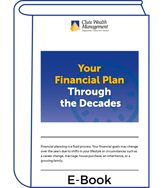3 min read
Your Retirement Spending AND Income: Two Plans are Better than One
Heidi Clute : July 10, 2016

Retirement plans demonstrate the wisdom of the proverb “two heads are better than one” — a proverb that always brings to mind the music from the classic Sesame Street video. Now the “two heads” can be you and your spouse, or you and your financial advisor, but you can also benefit from encouraging a dialogue between the income-you and the spending-you.
Your retirement spending plan
The spending side of you can be a lot of fun. Start with what you’re spending right now on a monthly and annual basis for every category. (If you don’t know for sure, start tracking and patterns will emerge.) Next, take your current consumption level and develop a version for your spending in retirement. Will you spend less on clothes when you no longer need to go to the office everyday? Are you thinking of buying a second home, a boat or an RV? Will you spend more on travel because you have the time? What about charitable donations and gifts to family? You want to think through the potential impact of retirement on each category in your current spending.
In addition to your current spending and retirement spending, I recommend developing an “older age” spending plan as well. It’s okay to define older age however you’d like to – age 80+, age 90+ or beyond. The reality is that most of us change our behaviors and spend differently during the first ten to fifteen years of retirement than we do as we get much older. Travel spending may decrease. Healthcare costs may increase, and so forth. Revisit your categories of retirement spending and develop a variation for the “aged”. Now you will have a good handle on three different spending plans: current level, initial retirement spending level and older age retirement spending.
If you run into a snag developing your spending plans, it is likely to be predicting healthcare costs. Thankfully, there are some recent research-based guidelines available. According to the “2021 Retirement Healthcare Costs Data Report” from HealthView Services Inc., a healthy 65-year-old couple living to 87 (male) and 89 (female) is expected to spend $662,156 on healthcare costs throughout retirement. Healthy is the important word here.
Your retirement income plan
With your spending plans ready, now it is time to develop a retirement income plan to match each spending plan. The income sources to finance your current spending are likely to be pretty simple: you are working for a living, which makes a salary or business income your primary income source, perhaps with additional income from dividends, interest earned and capital gains. For your retirement income plan, you may want to talk with your financial advisor about how to transition your assets to income-producing investments that strive to replace your current salary or business income.
Initially, your retirement income plan may make you forget your retirement spending plan because it looks as if you have more than enough money to handle your wants and needs. But be careful. If you spend too much in year one, what will happen? If you draw down big bucks to spend on a second home or an RV in year three of retirement, what does that do to your retirement income plan in year four and beyond? If you draw down large amounts for several years in a row, what will your retirement income plan look like in your older years? You want to develop a retirement income plan that works for years at each level of your retirement spending plans.
It takes two
It can seem like it is hard to plan ahead when you aren’t sure what the future holds, but that doesn’t mean you can’t be well prepared. When you have two financial plans, retirement spending and retirement income producing, you will be as ready as anyone can be for the future. So go ahead, start humming that Sesame Street tune….
Resources
“2021 RETIREMENT HEALTHCARE COSTS DATA REPORT” HealthView Services Inc. [pdf]
Your Financial Plan Through the Decades E-Book
-------------
Heidi Clute, CFP® is co-owner of Clute Wealth Management in South Burlington, VT and Plattsburgh, NY, an independent firm and registered investment advisor that provides strategic financial and investment planning for individuals and small businesses in the Lake Champlain Valley region. The opinions voiced in this material are for general information only and not intended to provide specific advice or recommendations. Investing involves risks including possible loss of principal. No strategy assures success or protects against loss. For a list of states in which we are registered to do business, please visit www.clutewealthmanagement.com. PLEASE NOTE: When you link to any of the third-party web sites provided here, you are leaving this web site. We make no representation as to the completeness or accuracy of information provided at these web sites.
Securities offered through LPL Financial, member FINRA/SIPC. Clute Wealth Management and LPL are separate entities.





